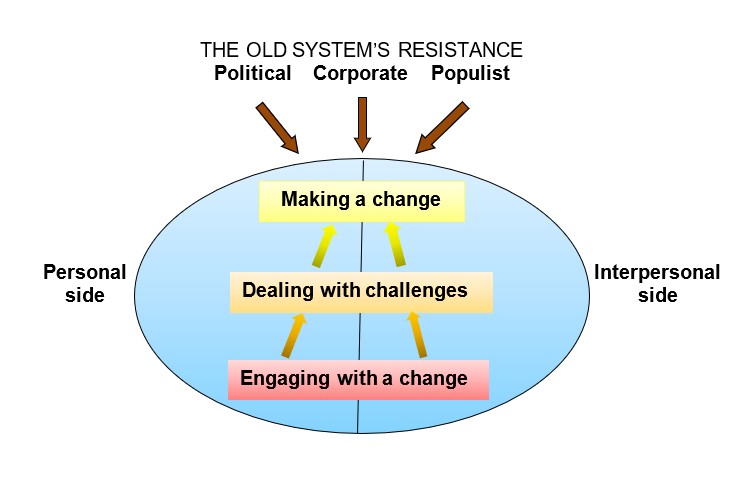The How of Change

There are all sorts of wonderful ideas, but unless translated into practice, they remain just that – wonderful ideas, no more than pie in the sky. To help with implementing some of the ideas we discussed earlier, this concluding chapter will focus on issues that may be encountered along the way. Most of them are not unique to Social Synthesis and are relevant to any attempt at progressive social change. Generally speaking, such attempts consist of three steps. The first is engaging with change, and is still largely ‘theoretical’. There are many people on social media who sympathise with, support and are vocal about worthwhile causes. Very few go further though, because of the numerous challenges that need to be overcome; facing and addressing these challenges is the next step. The third is to make change happen. Of course, in reality these three steps are not clearly demarcated – they often overlap and do not always go in this order. However, for the sake of clarity, we will use this structure to organise this topic. Now, those who say, “if you want to change the world, start with yourself” have a point, as nothing will be done well if you don’t put your own house in order. But, of course, this is not enough.
To make an impact, we also need to get together. This is why each of these three steps has a personal and interpersonal side. Finally, we also need to take into account that the emergence of the new system needs to be protected from some elements of the old that will oppose the change. What we have in mind is political, corporate or populist fight-back. Social change is not a simple endeavor.
This diagram is a visual representation of all these elements:

Engaging With Change
The first step in making a change is engaging with it. There are many ways of doing so, some of which are productive, some don’t get us very far, and some are outright unhelpful. In this part, we will first make some suggestions on how we, ourselves, can engage constructively. This may go long way but is almost never enough. We need to engage others too, so we will also discuss some effective ways of involving others too.
Challenges On The Way
As with the previous stage, this step is also divided into personal challenges on the one hand, and, on the other, interpersonal challenges that may crop up among those already engaged. Let’s start again with possible challenges within ourselves, because if they are not overcome nothing else is likely to work.
Making Change
Once again, this stage is divided into two parts: suggestions that can facilitate the process when making a change oneself, and suggestions that may encourage others to join the process of evolution and make a change too.
Resisting Pressures
Of course, transition is not going to happen without the system fighting back. The first challenge when trying to address this is a difficulty to pin down the system. The existing system is not one thing, nor even a number of discrete things.
